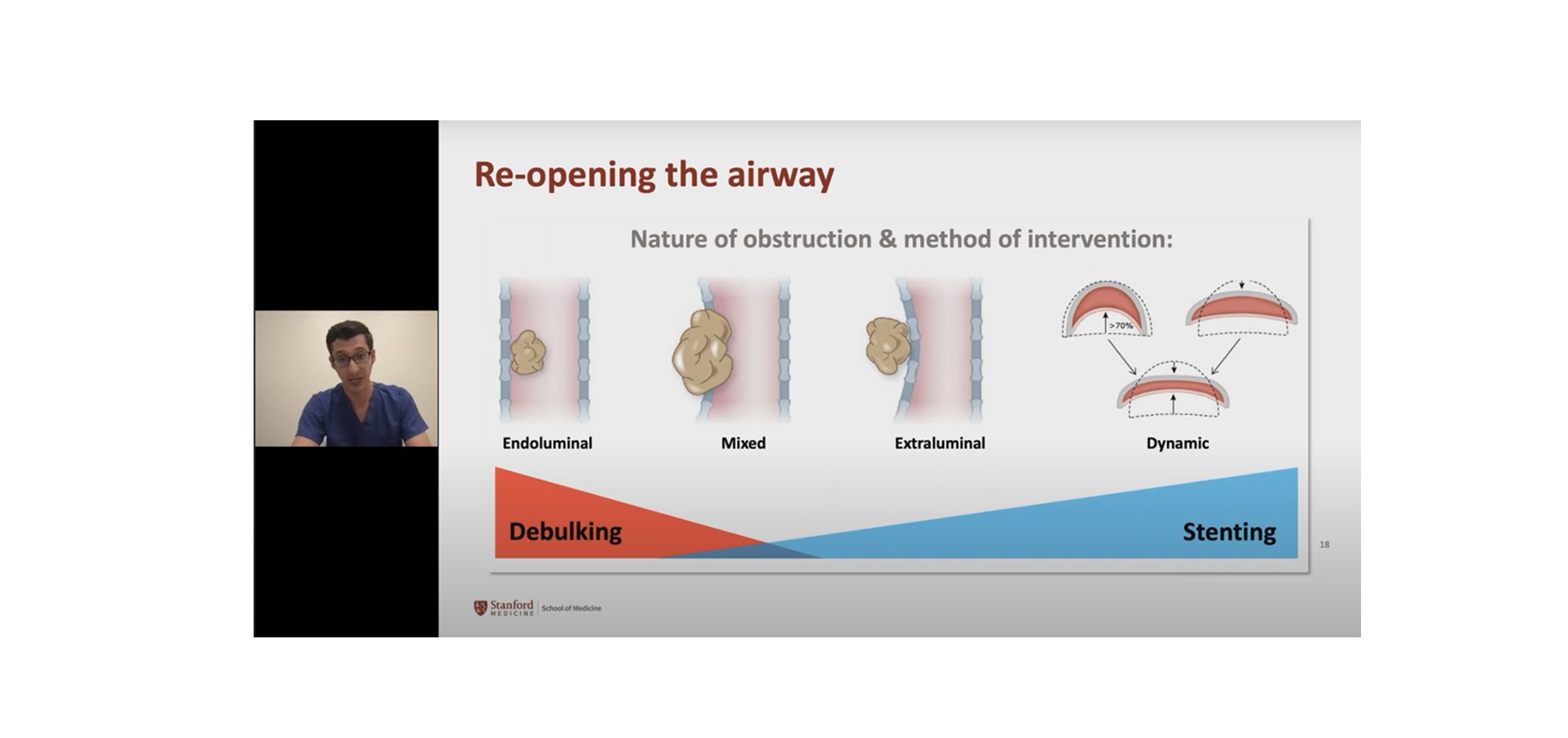
Clinicians are performing an expanding range of procedures with flexible bronchoscopes that once were the sole purview of rigid bronchoscopy.
Success in doing so depends on factors such as training, comfort, experience and resources, said Dr. Brian Shaller, an interventional pulmonologist at Stanford University, in a recent Society for Advanced Bronchoscopy webinar.
“A rigid bronchoscope is a conduit and allows for a high degree of ease in swapping out tools or using multiple tools at once,” he said. ”Some tools are not readily compatible with a flexible scope. This category is dwindling over time, but silicone stents are one example of something that’s really not adaptable to non- rigid bronchoscopy.”
Shaller and Dr. Joon Chang, also a Stanford interventional pulmonologist, made the case for circumstances in which rigid bronchoscopes are better for patients — if bleeding is expected, for instance, or if silicone stenting is being done or when they simply are the only option for a procedure.
Many instances in which rigid bronchoscopy is performed involve airway obstruction, Shaller noted.
The doctors want their interventional pulmonology fellows to perform at least 50 cases using a rigid bronchoscope, in line with the American Association for Bronchology and Interventional Pulmonology (AABIP) IP Fellowship Accreditation Standards.
Shaller’s practice has started to use single-use endoscopes almost exclusively in their cases where a rigid bronchoscope is used as a conduit, in order to avoid damaging expensive reusable scopes, he said.
“We have found that the developments in single-use scopes have actually helped us to do these procedures without damaging our supply of scopes,” Shaller said.
Flexible and rigid scopes also are being used together with positive results elsewhere in the world.
“Both flexible and rigid modalities can and often have to be used in conjunction to treat central airway diseases,” doctors from Spain and Greece wrote in European Respiratory Review. “Combining multiple ablative modalities with flexible and/or rigid instruments may result in optimal patient outcomes.”
Watch a replay of the webinar below. Shaller and Chang are both Ambu consultants.


